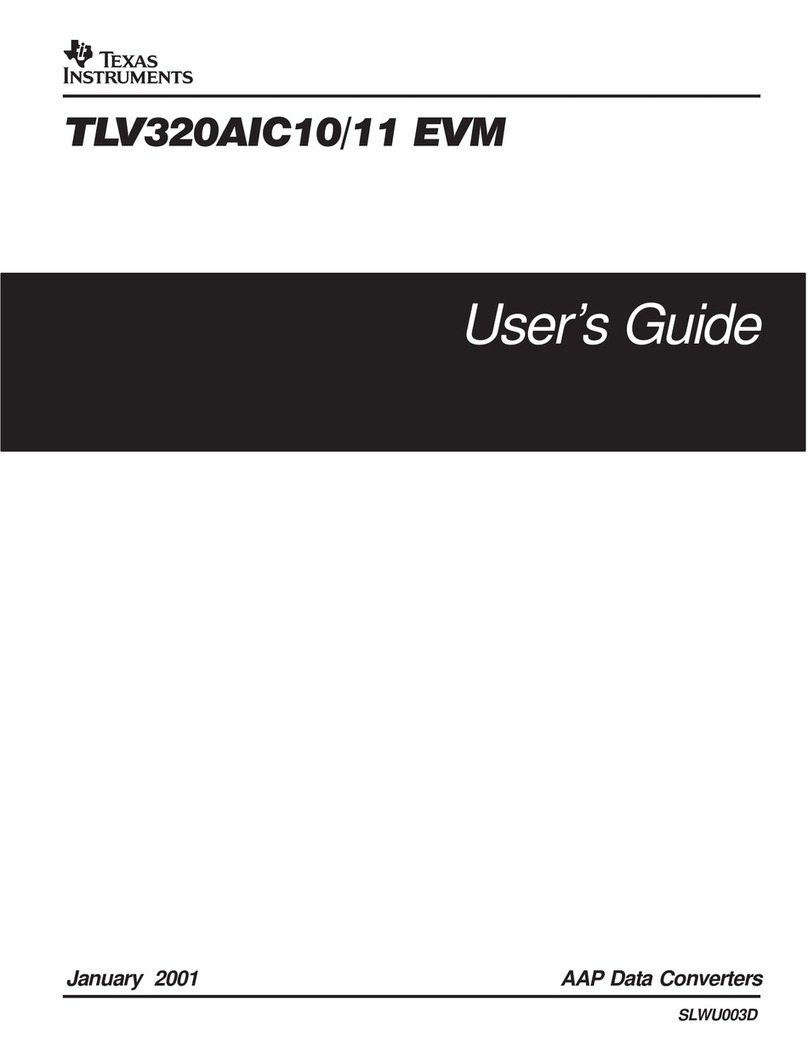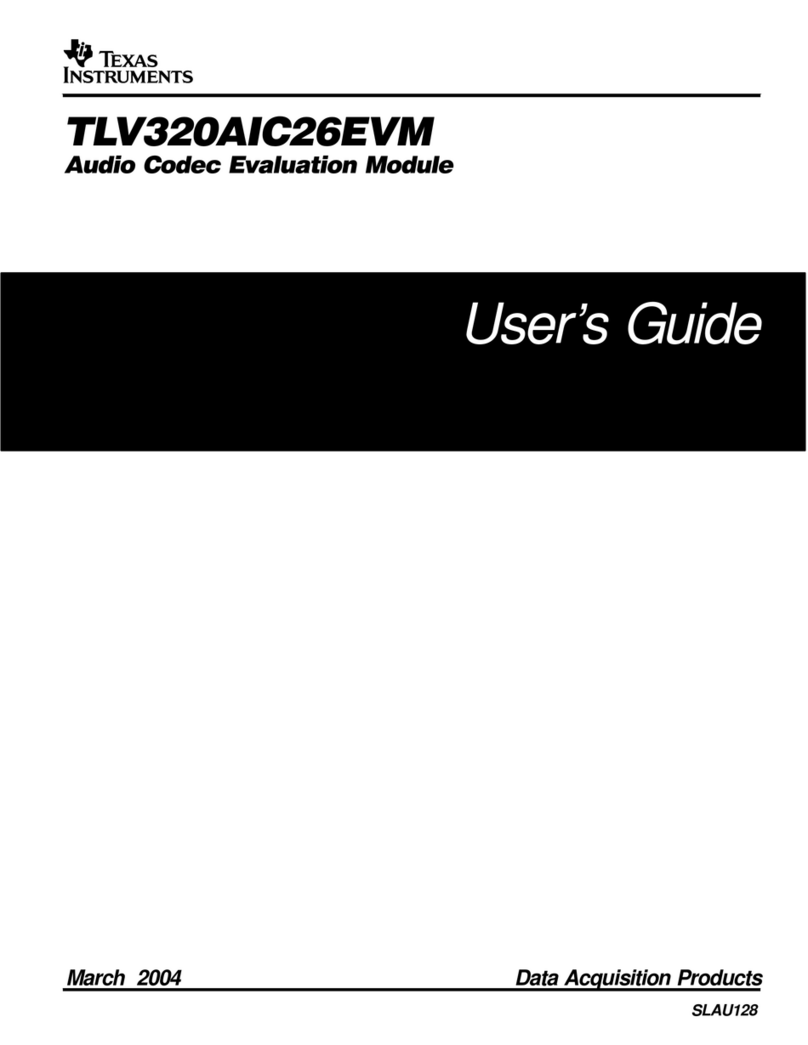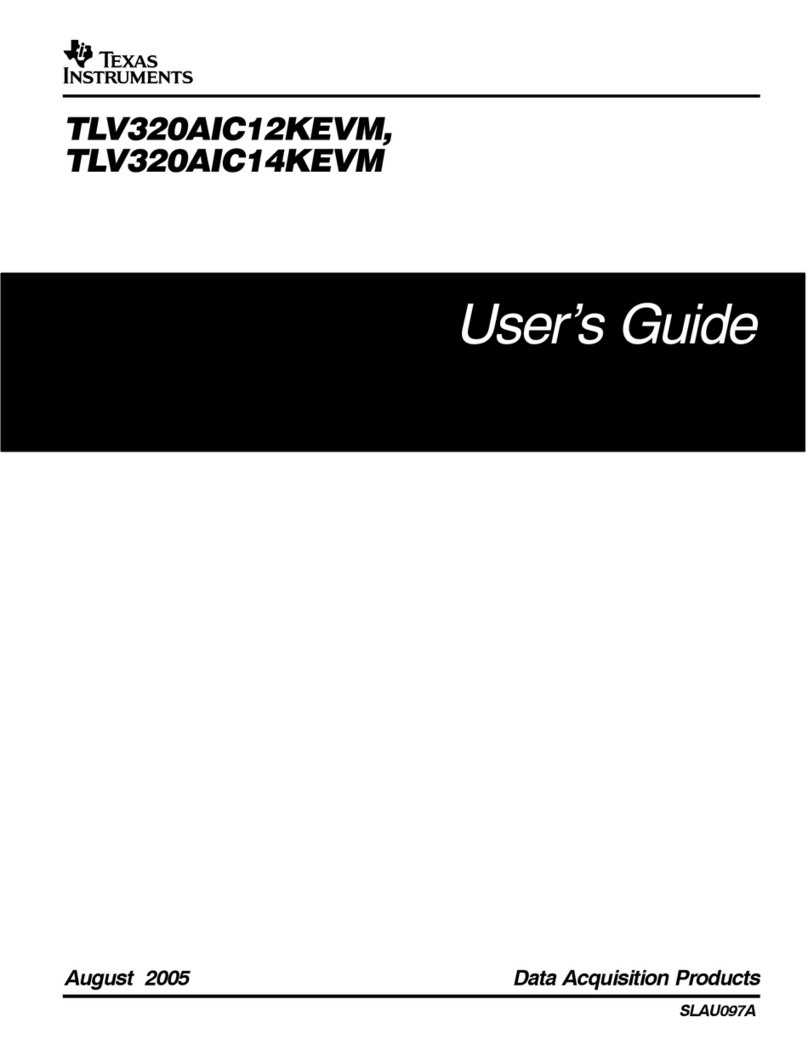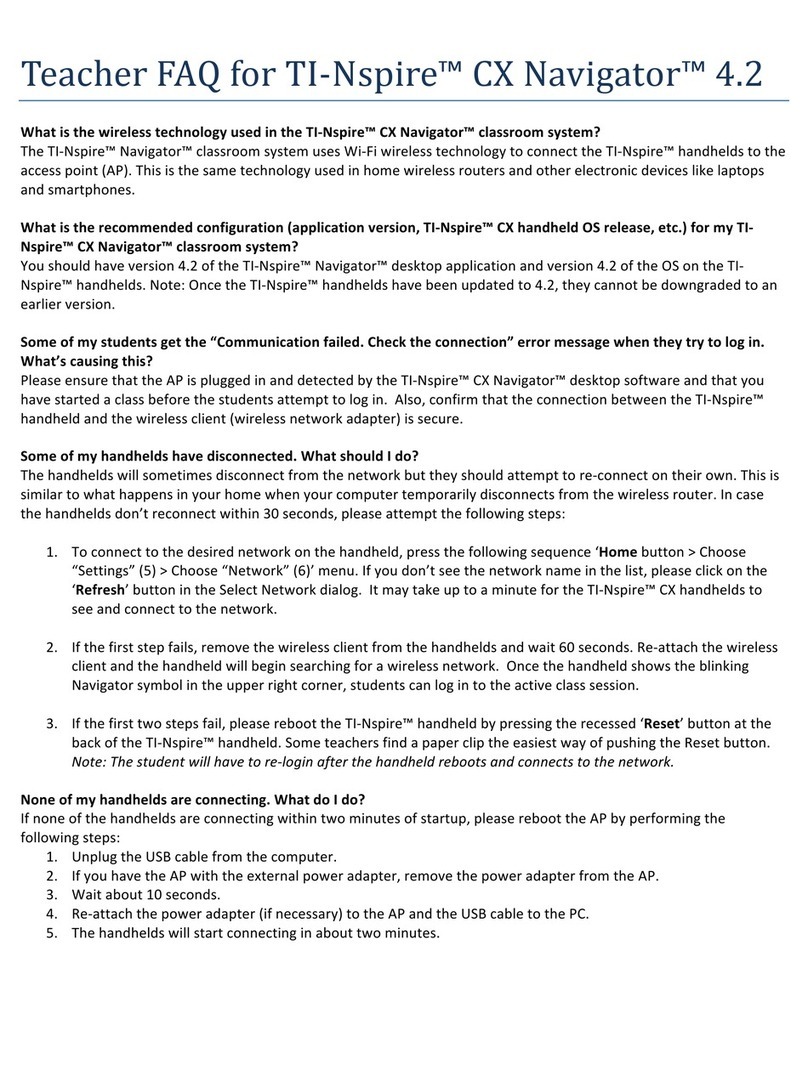
www.ti.com
3.3 Analog and Reference Startup .......................................................................................... 73
3.4 PLL Startup ................................................................................................................. 73
3.5 Setting Device Common Mode Voltage ................................................................................ 73
4 Example Setups ................................................................................................................ 74
4.1 Stereo DAC Playback with 48ksps Sample Rate and High Performance. ......................................... 74
4.2 Stereo DAC Playback with 48ksps Sample Rate and Low Power Mode .......................................... 75
4.3 DAC Playback with 48ksps Sample Rate through Class-D Headphone Amplifiers .............................. 75
4.4 ADC Record through Digital Microphone with 44.1ksps Sample Rate ............................................. 77
4.5 Register Script for Mono DAC playback with 48ksps on Differential Headphone with Offset Calibration ..... 77
5 Register Map ..................................................................................................................... 79
5.1 Register Map Summary ................................................................................................... 79
5.2 Page 0 Registers .......................................................................................................... 79
5.2.1 Page 0 / Register 0: Page Select Register - 0x00 / 0x00 ............................................... 79
5.2.2 Page 0 / Register 1: Software Reset Register - 0x00 / 0x01 ............................................ 79
5.2.3 Page 0 / Register 2: Reserved Register - 0x00 / 0x02 .................................................. 79
5.2.4 Page 0 / Register 3: Reserved Register - 0x00 / 0x03 .................................................. 80
5.2.5 Page 0 / Register 4: Clock Setting Register 1, Multiplexers - 0x00 / 0x04 ............................ 80
5.2.6 Page 0 / Register 5: Clock Setting Register 2, PLL P&R Values - 0x00 / 0x05 ...................... 80
5.2.7 Page 0 / Register 6: Clock Setting Register 3, PLL J Values - 0x00 / 0x06 .......................... 80
5.2.8 Page 0 / Register 7: Clock Setting Register 4, PLL D Values (MSB) - 0x00 / 0x07 ................. 80
5.2.9 Page 0 / Register 8: Clock Setting Register 5, PLL D Values (LSB) - 0x00 / 0x08 .................. 81
5.2.10 Page 0 / Register 9-10: Reserved Register - 0x00 / 0x09-0x0A ........................................ 81
5.2.11 Page 0 / Register 11: Clock Setting Register 6, NDAC Values - 0x00 / 0x0B ........................ 81
5.2.12 Page 0 / Register 12: Clock Setting Register 7, MDAC Values - 0x00 / 0x0C ....................... 81
5.2.13 Page 0 / Register 13: DAC OSR Setting Register 1, MSB Value - 0x00 / 0x0D ..................... 82
5.2.14 Page 0 / Register 14: DAC OSR Setting Register 2, LSB Value - 0x00 / 0x0E ...................... 82
5.2.15 Page 0 / Register 15: Reserved Register - 0x00 / 0x0F ................................................. 82
5.2.16 Page 0 / Register 16: Reserved Register - 0x00 / 0x10 ................................................. 82
5.2.17 Page 0 / Register 17: Reserved Register - 0x00 / 0x11 ................................................. 82
5.2.18 Page 0 / Register 18: Reserved Register - 0x00 / 0x12 ................................................. 82
5.2.19 Page 0 / Register 19: Reserved Register - 0x00 / 0x13 ................................................. 82
5.2.20 Page 0 / Register 20: ADC Oversampling (AOSR) Register - 0x00 / 0x14 ........................... 83
5.2.21 Page 0 / Register 21: Reserved Register - 0x00 / 0x15 ................................................. 83
5.2.22 Page 0 / Register 22: Reserved Register - 0x00 / 0x16 ................................................. 83
5.2.23 Page 0 / Register 23: Reserved Register - 0x00 / 0x17 ................................................. 83
5.2.24 Page 0 / Register 24: Reserved Register - 0x00 / 0x18 ................................................. 83
5.2.25 Page 0 / Register 25: Clock Setting Register 8, Multiplexers - 0x00 / 0x19 .......................... 83
5.2.26 Page 0 / Register 26: Clock Setting Register 9, CLKOUT M divider value - 0x00 / 0x1A .......... 83
5.2.27 Page 0 / Register 27: Audio Interface Setting Register 1 - 0x00 / 0x1B ............................... 84
5.2.28 Page 0 / Register 28: Audio Interface Setting Register 2, Data offset setting - 0x00 / 0x1C ....... 84
5.2.29 Page 0 / Register 29: Audio Interface Setting Register 3 - 0x00 / 0x1D .............................. 84
5.2.30 Page 0 / Register 30: Clock Setting Register 10, BCLK N Divider - 0x00 / 0x1E .................... 84
5.2.31 Page 0 / Register 31: Audio Interface Setting Register 4, Secondary Audio Interface - 0x00 / 0x1F
................................................................................................................... 85
5.2.32 Page 0 / Register 32: Audio Interface Setting Register 5 - 0x00 / 0x20 ............................... 85
5.2.33 Page 0 / Register 33: Audio Interface Setting Register 6 - 0x00 / 0x21 ............................... 85
5.2.34 Page 0 / Register 34: Digital Interface Misc. Setting Register - 0x00 / 0x22 ......................... 86
5.2.35 Page 0 / Register 35-36: Reserved Register - 0x00 / 0x23-0x24 ...................................... 86
5.2.36 Page 0 / Register 37: DAC Flag Register 1 - 0x00 / 0x25 .............................................. 86
5.2.37 Page 0 / Register 38: DAC Flag Register 2 - 0x00 / 0x26 .............................................. 86
5.2.38 Page 0 / Register 39-41: Reserved Register - 0x00 / 0x27-0x29 ...................................... 87
5.2.39 Page 0 / Register 42: Sticky Flag Register 1 - 0x00 / 0x2A ............................................. 87
5.2.40 Page 0 / Register 43: Interrupt Flag Register 1 - 0x00 / 0x2B .......................................... 87
3
SLAU434–May 2012 Contents
Submit Documentation Feedback Copyright © 2012, Texas Instruments Incorporated
































